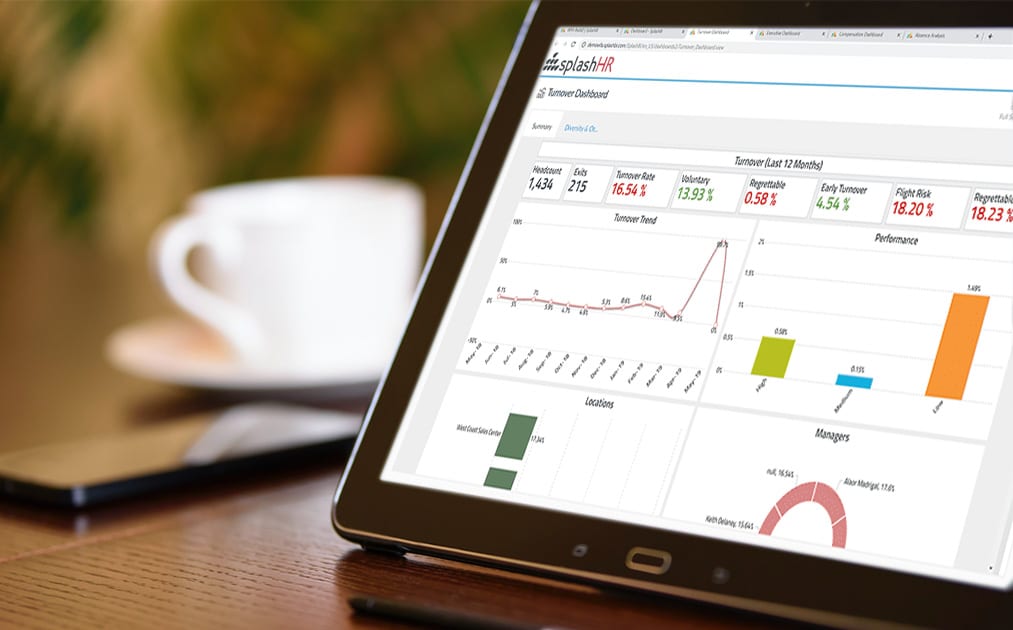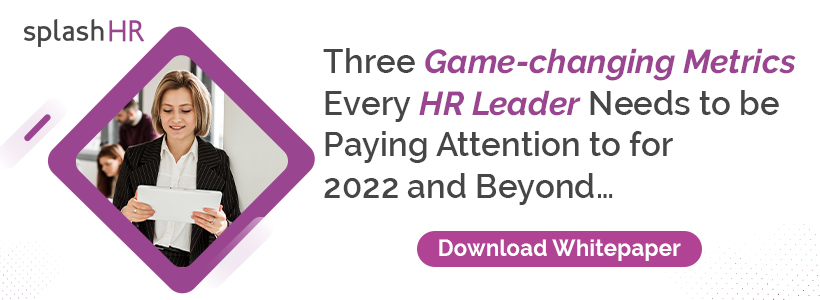So, what exactly is Workforce Analytics?
Workforce analytics is the process of using data-based intelligence to improve and enhance decision making, like managing and hiring top talent, aligning compensation with performance etc… It leverages “big data” to make informed workplace decisions and predictions.
Many organizations have a massive amount of data, which is often either not utilized well or not organized correctly. Workforce analytics helps in optimizing this data by collating it, arranging it, and transforming it into valuable decision-making information for human resources.
Many organizations hire data scientists for towering salaries. However, what’s the use of such analysts when data is just collected. It’s just like trees falling in the forest. Data becomes relevant only when it affects decision-making or if it could be understood.
Workforce analytics should always work along with decision-makers, to make accessing information and making better decisions easy. Otherwise, the HR analytics are almost insignificant.
Workforce analytics is the art of analyzing employee-related data applying an advanced set of tools and metrics. The goal is to recognize, quantify, and improve the role of talent in the achievement of strategy and value creation.
It involves gathering data from internal and external sources, processing, storing, and analyzing it to get insights about people on whose competence an organization’s performance depends.Workforce analytics enables HR professionals to make educated decisions related to employee lifecycle like recruitment, performance evaluation, training, compensation, and much more.
How does Workforce Analytics Help in Solving Employee-related Queries?
HR professionals generally apply four kinds of analytics to get insights about a company’s workforce.
1. Descriptive analytics
helps them gather and analyze data that describes the current state of things or past events.
2. Predictive analytics
Predictive analytics helps in anticipating future outcomes and values based on the analysis of current and historical data. It uses statistical techniques like data mining and machine learning. Organizations use predictive analytics to optimize operations and improve the employee experience. To delve deeper into this, check out how HR predictive analytics improves HR strategies.
3. Prescriptive analytics
Prescriptive analytics gives suggestions on what to do based on predictions and what had happened in the past. This approach is exceptionally profitable for organizations with busy seasons. For more detailed insights, check out difference between prescriptive and predictive analytics.
4. Diagnostic analytics
show the causes of the results exhibited descriptive analytics. It explains the underlying cause, which helps us to focus our efforts to decrease the problem.
Workforce Analytics, HR Analytics, People Analytics, and Talent Analytics! Are they all the same?
The terms People Analytics, Talent Analytics, Workforce Analytics, and HR analytics used interchangeably do not mean the same thing. We can use Workforce and HR Analytics in the same breath, just like People and Talent Analytics.People and Workforce Analytics work in conjunction, but they do not mean the same thing.
People Analytics
People Analytics is the data gathered from an individual starting from their hiring process and continuing until their last day of employment. There are numerous benefits of People Analytics, which are reapplied to the company’s employees and hiring processes to attract better applicants, enhance employee performance, improve retention, and make smarter hiring decisions.
Workforce Analytics
, however, focuses on the workforce on a slightly extensive scale. It is more of a technology-driven strategy for evaluating talent assessments. In workforce analytics, data collected helps to refine and enhance assessments that potential candidates and current employees must take.
Benefits of Workforce Analytics –
There are lots of advantages with workforce analytics that help companies get better insight about their organization and employees and spot trends in the workplace. With the help of technology, which has grown many folds in recent years, workforce analysis provides a return on investment (ROI) for the organization’s bottom line.
HR analytics help business leaders in developing and improving hiring methods and retain the most skilled workers with the company. Also, it can assist in doing the following:
- Predict the probability an individual employee’s success can bring to an organization.
- Identify the demand for new functions and positions.
- Discover which functions or positions can be reassigned or reduced.
- Help to analyze and better manage expenses (like Payroll, Benefit).
- Recognize and quantify the factors that influence employee engagement.
- Predict current and future needs.
- Optimize the company’s structure and policies to facilitate better performance and productivity.
- Make processes leaner, efficient and effective.
- Help the company to identify, support, and develop high potential employees and future leaders.
- Create a fair compensation system
Let us now look at different types of workforce analytics that can provide us better insight:
Employee Engagement
Companies today are more focused on employee engagement. Engaged employees are more likely to be loyal, committed, and productive. They are less likely to experience reduced morale during stressful business ventures. They provide a good measure of how effective management is. More engaged employees are usually a sign of good leadership. Engaged employees are more excited to come to work every day and believe in the company’s vision. To learn more about engaging employees, especially millennials, check out how to engage millennials in the workplace.
Training Efficiency
Being capable of running reports on how training fare helps the human resources team to plan and develop future trainings. It gives them a fair understanding of how good they are on their employee improvement agenda as an organization. The employee training effectiveness is directly proportional to the productivity of employees as it makes employees more skilled at their jobs.
Churn Rate
The churn rate or turnover in an organization is reflective of how engaged its employees are. The churn rate can tell you a lot about the health of your workforce. It is vital to understand how many employees leave your company monthly and annually. If your turnover is low, you have a healthy work culture. If it is high, you will have to work on the possible causes. Implementing effective strategies to reduce employee turnover can significantly improve employee retention and overall organizational health.
Absence
Absence is another type of workforce analytics that HR teams use to understand the health of your employee culture. Absenteeism around holidays is normal. However, if you see sick days collecting up for people reporting to the same manager, it calls for retrospection. Absenteeism tells you a lot about how much employees value your business. It leads to high health care costs and low productivity.
Data that Matter!
There are several compelling reasons as to why businesses need to invest in workforce analytics. Let us look at a few stats about employee turnover:
- Only 16 percent of employees said they seemed engaged to employers.
- It costs about 33% of an employee’s salary to replace him or her.
- Over 75% of the reasons for employee turnover are preventable.
- Around 17% of companies using HR technology are striving to decrease turnover.
- About 81% of employees consider leaving their company if they have the right offer.
Should I invest in Workforce Analytics?
Unlike other corporate functions, investment in Workforce Analytics is essential. HR, in the past, had no analytical tools and science to quantify investment opportunities. Technology, though, has improved and investing in workforce analytics today has become imperative for the following reasons:
Transparency
It allows leaders to get visibility into processes and results that once used to be murky. It also enables business leaders better to justify additional investment in HR tools and services.
Improved Monitoring
Business leaders can monitor the inputs and outputs of their pre-post-employment hiring processes to track progress against benchmarks. It enables them to be ready for most outcomes.
Forecast
The historical data and modern trends help business leaders in asking relevant questions and determining potential business impact. Forecasting enables business leaders to assess if any change is sustainable for their business.
Real-time workforce analytics is the process of using statistical tools and methodologies for company leaders to optimize human resources management by leveraging data intelligence tools.
How is SplashBI for HR Different from Others?
SplashBI’s SplashBI for HR gives you a head start with pre-defined, industry-standard people analytics. We offer 700+ pre-defined people KPIs across 25 dashboards, covering areas like employee retention, recruitment, performance, and absenteeism.
We offer faster results using automatic data connectors. With SplashBI for HR, you need not worry about field mappings and data transformation.
SplashBI for HR’s pre-defined KPIs and dashboards can be extended using any data source, including engagement surveys, employee recognition, finance, and more.
SplashBI for HR enables HR leaders to leverage vast amounts of people data to fulfill business goals and present the data to management in an effective way.
SplashBI for HR monitors the overall organizational health for every leader, job type, location, and department. It includes vital human capital management analytics like:
- Turnover
- Employee performance
- Absenteeism
- Compensation
- Diversity & Inclusion
Conclusion
One of the most critical aspects of workplace analytics is to keep measuring and stay transparent with employees and stakeholders. Once everyone recognizes the importance of tracking this data, it becomes easier to get the needed information and make informed HR decisions.
There is no one-size-fits-all workforce management strategy for all companies. What’s worked for one company may not work for the other. Workforce management is no rocket science.
Organizations have a lot of the data they do not need. It is all about creating the right workforce management and reporting practices to understand the data in meaningful ways.
An efficient analytics solution like SplashBI for HR, by virtue of their domain expertise and deep understanding of data and trends, can help organizations make sense of their people analytics and benefit from it.















